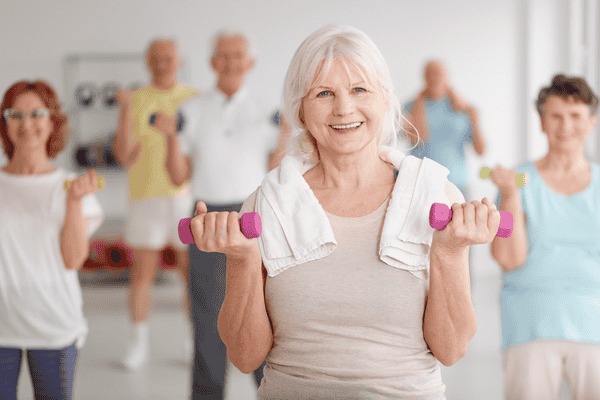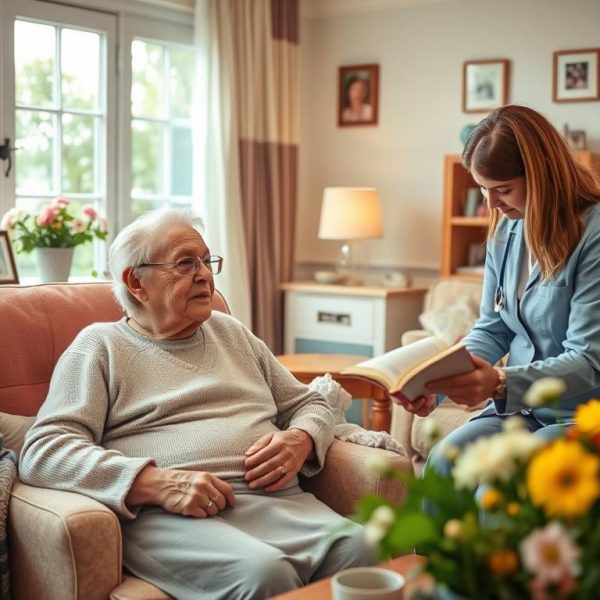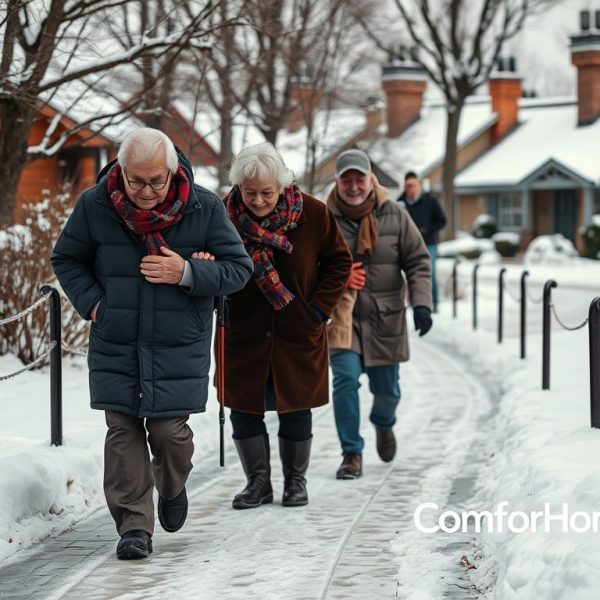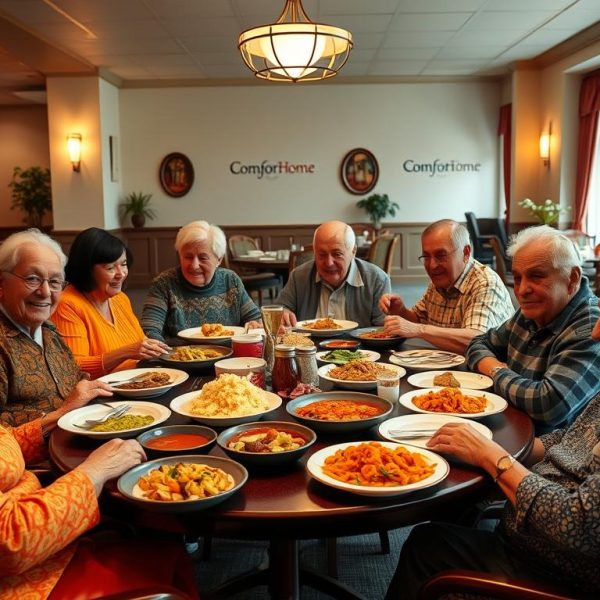It was a crisp autumn morning when Margaret, at 72, laced up her walking shoes and headed to the local park. Her doctor had recently emphasized the importance of exercise, particularly for her heart health. Margaret had always led an active life, but after turning 70, she found herself slowing down. Her daughter, concerned for her well-being, had gently suggested she incorporate aerobic exercise into her routine. What Margaret didn’t realize that day was how much of a transformation aerobic exercise would bring—not just for her body, but for her heart, mind, and spirit.
The Role of Aerobic Exercise in Cardiovascular Health
Aerobic exercise, often referred to as “cardio,” plays a crucial role in maintaining and improving cardiovascular health, particularly for seniors. The rhythmic nature of activities such as walking, swimming, and cycling can strengthen the heart, improve circulation, and enhance the efficiency of oxygen transport throughout the body. For elderly individuals like Margaret, aerobic exercise becomes even more important, as it directly impacts the ability to manage blood pressure, cholesterol levels, and overall heart function.
As Margaret began her regular walks, she found that not only did her stamina improve, but her shortness of breath diminished. This was no coincidence—consistent aerobic exercise works wonders in improving lung function, making it easier to breathe deeply and deliver oxygen efficiently to the body. For seniors, maintaining lung capacity is vital for everyday activities, and Margaret’s story is a reminder of the profound effects even moderate aerobic exercise can have.
Strengthening the Heart Muscle
At the core of aerobic exercise’s benefits is its ability to strengthen the heart muscle. The heart, after all, is just that—a muscle. The more you use it, the stronger it becomes. As seniors age, the risk of heart disease increases. For people like Margaret, a simple walking routine serves as a preventative measure against conditions like heart failure and coronary artery disease.
When the heart pumps more efficiently, it doesn’t have to work as hard to circulate blood. This reduces the strain on arteries and keeps blood pressure at healthy levels. Margaret noticed this firsthand when, after three months of her walking routine, her blood pressure readings had stabilized. Her doctor was impressed. With each brisk walk, her heart became a bit more efficient, and over time, her heart health had improved dramatically.
For seniors with existing heart conditions, aerobic exercise can still be a powerful tool in managing symptoms and improving quality of life. Margaret’s friend, Charles, 80 years old, had been diagnosed with heart disease a decade ago. He had initially been hesitant to engage in exercise, fearing it would overexert him. However, under his doctor’s guidance, Charles began a gentle cycling routine on a stationary bike. To his surprise, not only did his energy levels improve, but he also experienced fewer episodes of chest pain and discomfort.
Managing Blood Pressure and Cholesterol
High blood pressure and elevated cholesterol levels are two common risk factors for heart disease in seniors. Fortunately, aerobic exercise has been shown to lower both. For people like Margaret, the regular movement from walking stimulated the production of nitric oxide, a molecule that helps relax blood vessels. As the blood vessels relaxed, her blood pressure naturally lowered.
Similarly, aerobic exercise affects cholesterol by increasing levels of HDL (the “good” cholesterol) and reducing levels of LDL (the “bad” cholesterol). Margaret’s routine, though moderate, was enough to see a positive shift in her cholesterol levels after just a few months. Her doctor explained that aerobic exercise stimulates enzymes that help transport LDL to the liver, where it’s broken down and expelled from the body. With less LDL circulating in her bloodstream, her risk of plaque buildup in the arteries was reduced.
For seniors concerned about their cholesterol or blood pressure, it’s reassuring to know that even low-impact aerobic exercises, like walking or water aerobics, can make a difference. The key is consistency. Margaret’s commitment to her daily walks proved to be the golden ticket to better cardiovascular health, and for other elderly individuals, it offers hope and inspiration.
Aerobic Exercise for Seniors: Accessible and Effective
One of the most important aspects of aerobic exercise for seniors is its accessibility. Unlike high-intensity workouts that can be intimidating or physically taxing, aerobic activities can be gentle and tailored to individual fitness levels. Margaret’s story is proof that a simple 30-minute walk can have profound effects on heart health, but that’s just the beginning.
Activities such as swimming, cycling, dancing, or even gardening can serve as effective forms of aerobic exercise. For seniors like Charles, who dealt with joint pain, swimming provided a low-impact way to get the heart pumping without putting strain on his knees and hips. The buoyancy of the water made movement easier, and soon enough, Charles found that swimming not only helped his heart but also eased his arthritis symptoms.
It’s essential to find an aerobic activity that brings joy and is sustainable over time. Margaret discovered that walking in nature not only boosted her physical health but also provided mental clarity and emotional well-being. The rhythmic sound of her footsteps, the gentle rustling of leaves, and the fresh air became therapeutic elements of her daily routine.
Senior Fitness and Mental Health Benefits
Aerobic exercise is often celebrated for its physical benefits, but its positive impact on mental health should not be overlooked. For seniors, maintaining mental acuity and emotional balance is just as important as physical health. The act of engaging in regular aerobic exercise has been shown to reduce symptoms of anxiety and depression, improve sleep quality, and boost cognitive function.
Margaret experienced this firsthand when, after a few weeks of walking, she noticed a marked improvement in her mood. The regular exercise released endorphins, the body’s natural “feel-good” hormones, leaving her with a sense of accomplishment and positivity. As her energy levels increased, so did her confidence in her ability to manage her health.
Additionally, aerobic exercise increases blood flow to the brain, which is crucial for maintaining cognitive function as we age. Studies have shown that seniors who engage in regular physical activity tend to have better memory retention and are at a lower risk for cognitive decline. Margaret found that she was sharper and more focused after her walks, able to enjoy crossword puzzles and social activities with renewed enthusiasm.
Starting Small: Building Aerobic Exercise into Daily Life
For seniors considering incorporating aerobic exercise into their routine, it’s important to start small and build gradually. Margaret’s journey began with short walks around her block, and as her endurance improved, she ventured further. What started as 10-minute strolls eventually became 30-minute brisk walks, five days a week. It wasn’t about pushing herself too hard—it was about consistency and making movement a regular part of her life.
For those new to exercise, here are a few tips:
- Consult with a Doctor: Before starting any exercise routine, it’s essential to speak with a healthcare provider to ensure it’s safe, especially if there are preexisting health conditions.
- Start Slowly: Begin with short, manageable sessions. Whether it’s a 10-minute walk or a few laps in the pool, starting small can help build confidence and endurance over time.
- Set Realistic Goals: Setting achievable goals can provide motivation. Margaret’s initial goal was simply to walk around the park three times a week. As she grew stronger, she added more days and extended her walks.
- Find a Companion: Exercising with a friend can make the experience more enjoyable and create accountability. Margaret’s daughter occasionally joined her for walks, adding a social element to the routine.
Conclusion: The Power of Aerobic Exercise for Seniors
Margaret’s story is a testament to the transformative power of aerobic exercise for seniors. What began as a simple suggestion from her doctor blossomed into a routine that not only improved her cardiovascular health but also enriched her emotional and mental well-being. For seniors, aerobic exercise offers an accessible and effective way to improve heart health, manage blood pressure and cholesterol, and maintain a vibrant, active life.
Whether it’s walking, swimming, cycling, or another form of aerobic activity, the key is finding joy in movement. For Margaret and countless other seniors, the journey to better health starts with just one step.









What i don’t realize is actually how you are not really much more well-liked than you may be right now. You’re so intelligent. You realize therefore considerably relating to this subject, produced me personally consider it from a lot of varied angles. Its like women and men aren’t fascinated unless it’s one thing to accomplish with Lady gaga! Your own stuffs great. Always maintain it up!
Whats up very cool web site!! Guy .. Beautiful .. Wonderful .. I will bookmark your website and take the feeds also?KI am satisfied to find numerous helpful information here in the publish, we want work out extra strategies on this regard, thanks for sharing. . . . . .
Hi my friend! I wish to say that this post is awesome, nice written and include approximately all vital infos. I would like to see more posts like this.
Good website! I truly love how it is simple on my eyes and the data are well written. I’m wondering how I could be notified when a new post has been made. I’ve subscribed to your feed which must do the trick! Have a nice day!
Great beat ! I wish to apprentice at the same time as you amend your website, how could i subscribe for a weblog site? The account aided me a appropriate deal. I have been tiny bit familiar of this your broadcast offered brilliant clear concept
Very interesting points you have mentioned, regards for posting.
You are my aspiration, I have few web logs and infrequently run out from to post .
Whats up this is kinda of off topic but I was wanting to know if blogs use WYSIWYG editors or if you have to manually code with HTML. I’m starting a blog soon but have no coding know-how so I wanted to get guidance from someone with experience. Any help would be greatly appreciated!
Hiya! Quick question that’s completely off topic. Do you know how to make your site mobile friendly? My website looks weird when viewing from my iphone 4. I’m trying to find a theme or plugin that might be able to resolve this problem. If you have any recommendations, please share. Many thanks!
Oh my goodness! a tremendous article dude. Thanks Nonetheless I’m experiencing situation with ur rss . Don’t know why Unable to subscribe to it. Is there anyone getting an identical rss drawback? Anybody who knows kindly respond. Thnkx
Loving the information on this web site, you have done outstanding job on the posts.
Fascinating blog! Is your theme custom made or did you download it from somewhere? A theme like yours with a few simple adjustements would really make my blog stand out. Please let me know where you got your design. Bless you
I love it when people come together and share opinions, great blog, keep it up.